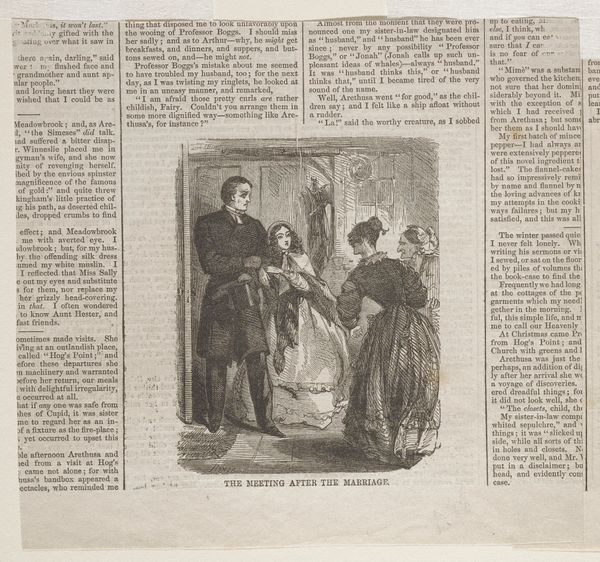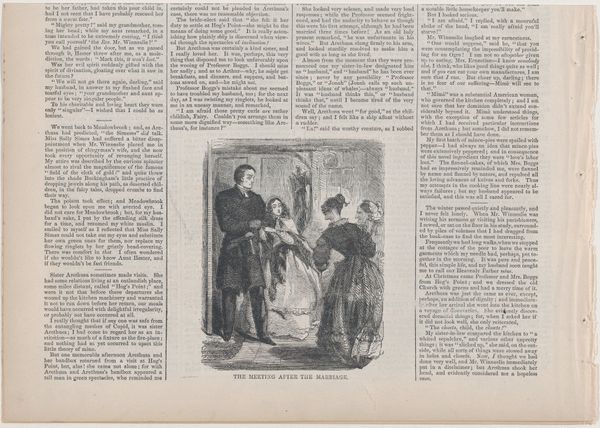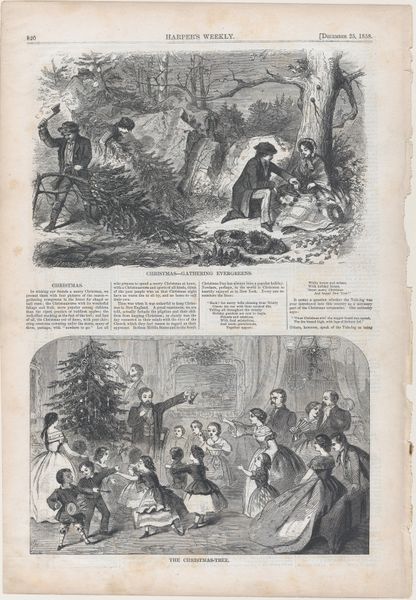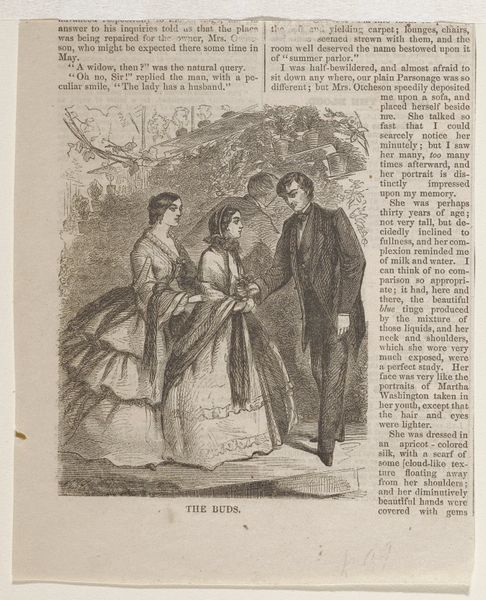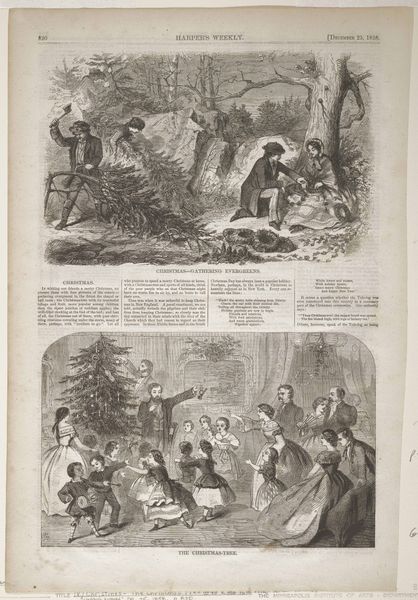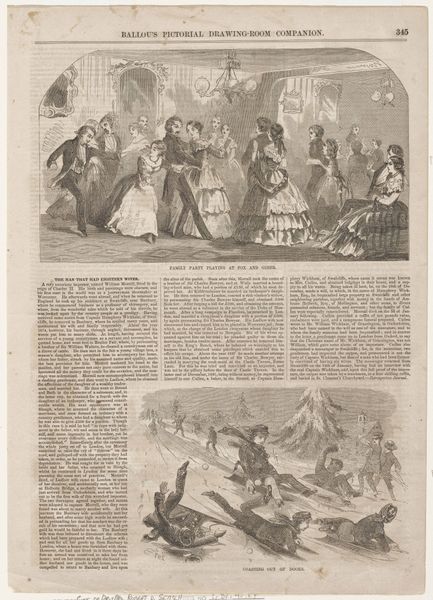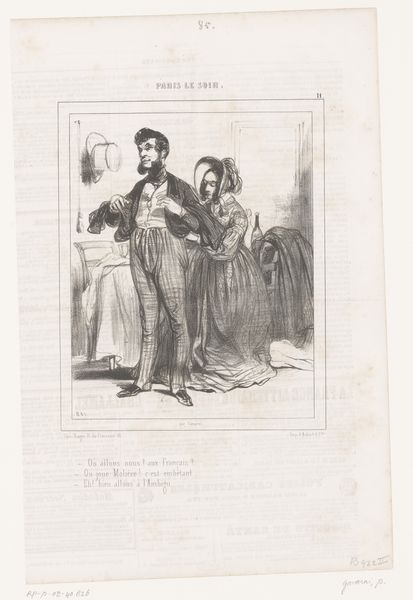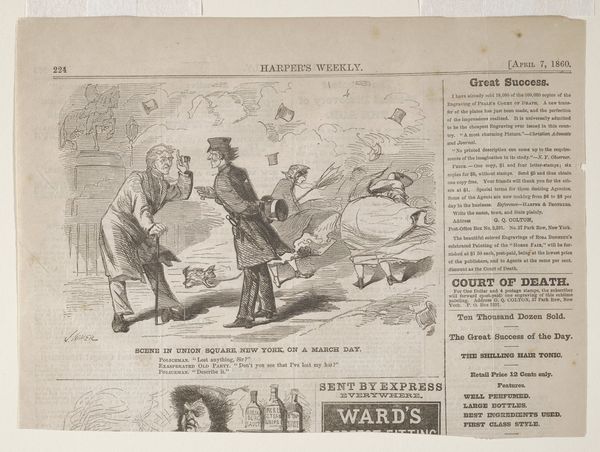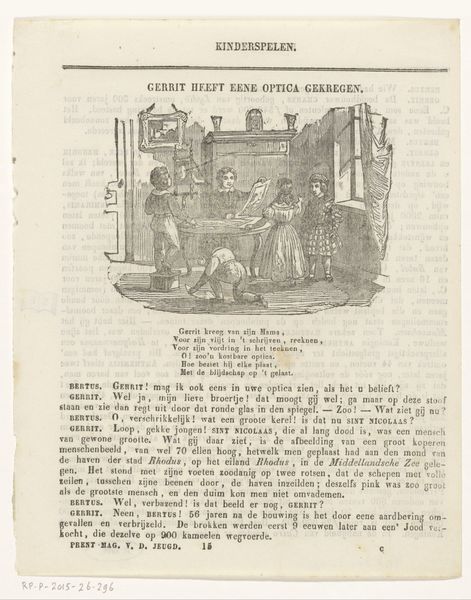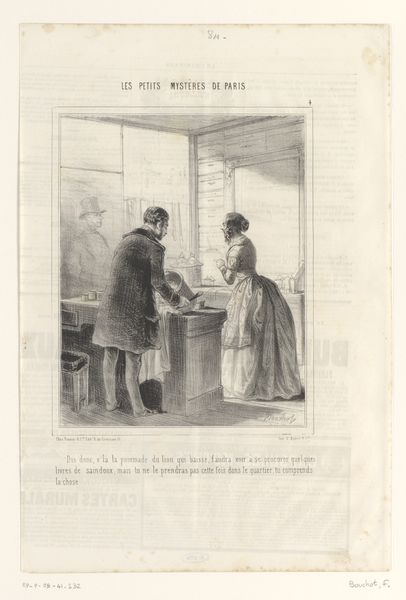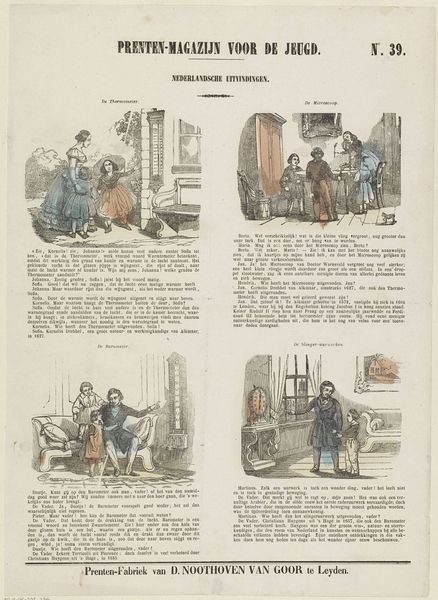
Dimensions: 4 3/8 x 4 3/8 in. (11.1 x 11.1 cm)
Copyright: Public Domain
Curator: Ah, to begin, allow me to present "Allow Me to Examine the Young Lady," a wood engraving created around 1860 by Winslow Homer. I’m just struck by the period details—a real time capsule. Editor: A time capsule that feels a bit…tense? The title has this charming, antiquated politeness, but the young lady seems anything but thrilled. There's a nervousness there. It is as if she’s a prize on display. The texture achieved in the woodcut itself heightens that unease for me, so contrast-y. Curator: Absolutely. As an artwork appearing in "Harper’s Weekly", the engraving was reproduced widely in America, shaped popular understandings and offered visual narratives for current events and social commentaries. Editor: That changes everything. Knowing that this would've been mass-produced and disseminated. The expressions on their faces become even more pronounced, right? Everyone seems to have a motive. Or something they're hiding. The details! Look at how carefully those lines create folds in the fabrics or even catch highlights on the faces! Curator: And consider the context of its making: anxieties about social mobility during that era in the US. This era’s the awkward dance of tradition versus progress. Do you feel any societal commentary seeping through? Editor: Undeniably. The piece feels performative, maybe even judgmental. Who is this young woman? Where does she come from? Why the examination? It prompts so many questions, doesn’t it? Makes you reflect on vulnerability. Curator: Exactly! And on the observer's gaze – a constant subject within art, the power dynamic it creates when displayed to the masses is, again, heightened by the medium it is presented in. Editor: Ultimately, while the technique fascinates, it’s the lingering questions that stick with me. Curator: Absolutely, the piece becomes much more than the scene it depicts and opens a dialogue about values and gazes in the United States at the time. The way Homer captured that complexity with what is essentially a very stark black and white piece continues to be compelling.
Comments
No comments
Be the first to comment and join the conversation on the ultimate creative platform.
